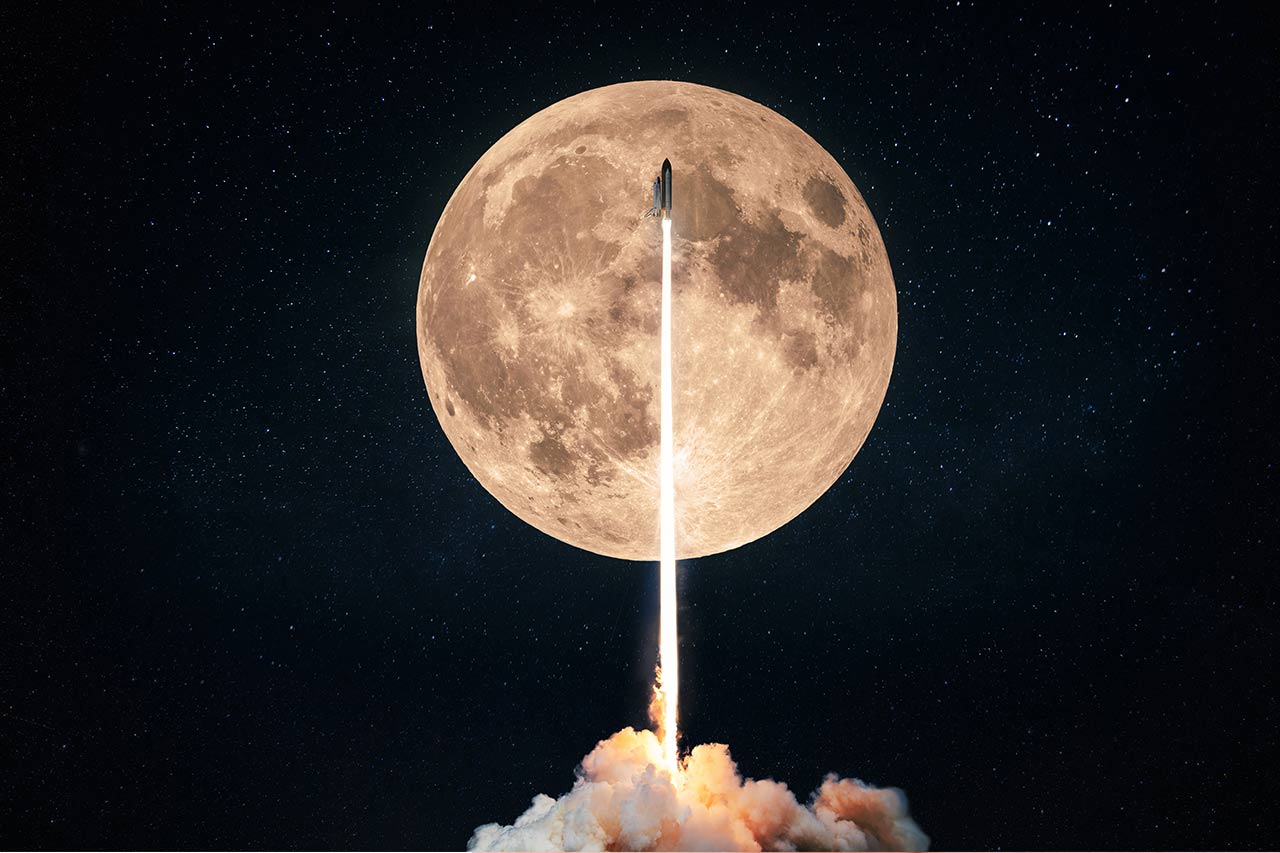3 ways environmentalism benefits space exploration

Electric propulsion in space works very differently from electric propulsion on earth. In space, there is no medium against which propulsion can be generated. Therefore, a satellite can only be propelled by shooting mass into the opposite direction of where it wants to go. Traditionally, this is being done by burning satellite fuel, which is generally Hydrazine. Hydrazine poses serious health risks when filling up a satellite tank, as well as environmental risks in the case of an accident. Therefore, the European Union has decided to consider banning Hydrazine, and it is widely expected that they will go through with it. SpaceNews even predicts a ban as early as 2021. Alcimed digs into 3 key tendencies that show how environmentalism invades space today.
Electric propulsion for satellites brings economic and environmental advantages
Beyond the use of Hydrazine, there is fortunately another way to propel satellites. Electric propulsion is not only safer for human health and the environment but is also more efficient. It uses Xenon as a propellant and electric tension to ionize the Xenon atoms and shoot them out to the back of the satellite. In doing so, the Xenon ions reach speeds up to 20 times faster than those reached by Hydrazine propulsion. As a result, up to 10 times less propellant is required to achieve the same power output.
This results in significant benefits related to weight reduction, especially at the launch phase. Thus, more payload can be embedded in one single rocket, which reduces emissions. However, the key driver is launch cost reduction, which can reach nearly 50% for large geostationary satellites. Therefore, over the past 10-15 years, more and more satellite manufacturers have been taking advantage of this new technology, especially for GEO telecommunication missions.
2. Chemical propulsion has not yet had its last word and is trying to become greener itself
It has to be mentioned that electric propulsion does have one big disadvantage, which is thrust. While hydrazine thrusters can produce thrust of up to 400N, electric propulsion systems only produce a few mN. Therefore, in order to address the complete range of satellite missions, the industry still needs a chemical propellant at their disposal. With this goal in mind, 3 “cleaner” alternatives have emerged with different level of maturity:
– The most advanced is a propulsion system developed by ECAPS and the Swedish Space Cooperation. It has already been used on the STPSAT, PRISMA and SkySat missions.
– In the US, the AirForce has also developed a less toxic, more powerful alternative to Hydrazine. NASA, Busek, Aerojet Rocketdyne and Ball Aerospace are currently working together on its development under what they call the GPIM (Green Propellant Infusion Mission). A demonstrator has been launched in June of 2019 for a 13-month testing mission.
– The most powerful green alternative propellant currently under development seems to be the Green Monergol by the French Space Agency CNES. While their system is in much earlier stages of development than its two competitors, a prototype of the engine for this green propellant has already been engineered and the power and efficiency look promising.
What about green technologies for deep space missions?
Like large GEO satellites, deep space missions can benefit a lot from electric propulsion. So far, the distances that spacecraft could travel have been partly limited by fuel, and high thrust levels are often not a necessary requirement. Being more efficient using electric propulsion thus enables spacecrafts to travel further and to explore beyond our solar system.
For the future, there are different plans and concepts to further improve the fuel efficiency of spacecrafts and enlarge our horizon. As of today, it would take about 50 000 years to get to our nearest star even with the most powerful propulsion system available! New concepts go as far as using antimatter as fuel. But the most realistic idea is probably nuclear fusion, which is under development at NASA. Over the last 2 years, the United States Congress funded this development with $225M. At the National Space Council meeting last August, NASA chief Jim Bridenstine lauded the concept as a potential enabler of Humanity’s next giant leap. Indeed, in theory this technology could cut the travel time to Mars in half, to only 3-4 months. However, despite all efforts, the earliest prototypes are expected for 2024… Therefore, electric propulsion is still the best method for large distance missions, at least for quite some years to come.
Alcimed will continue to follow this movement towards more environmentally friendly and economically beneficial technologies. As electric and chemical propulsion technologies evolve in order to offer satisfying alternatives to Hydrazine, it will be interesting to see what role potential new concepts will play in the future.
About the author
Steffen, Senior Consultant in Alcimed’s Aeronautics Space Defence team in France
Do you have an exploration project?
Our explorers are ready to discuss it with you